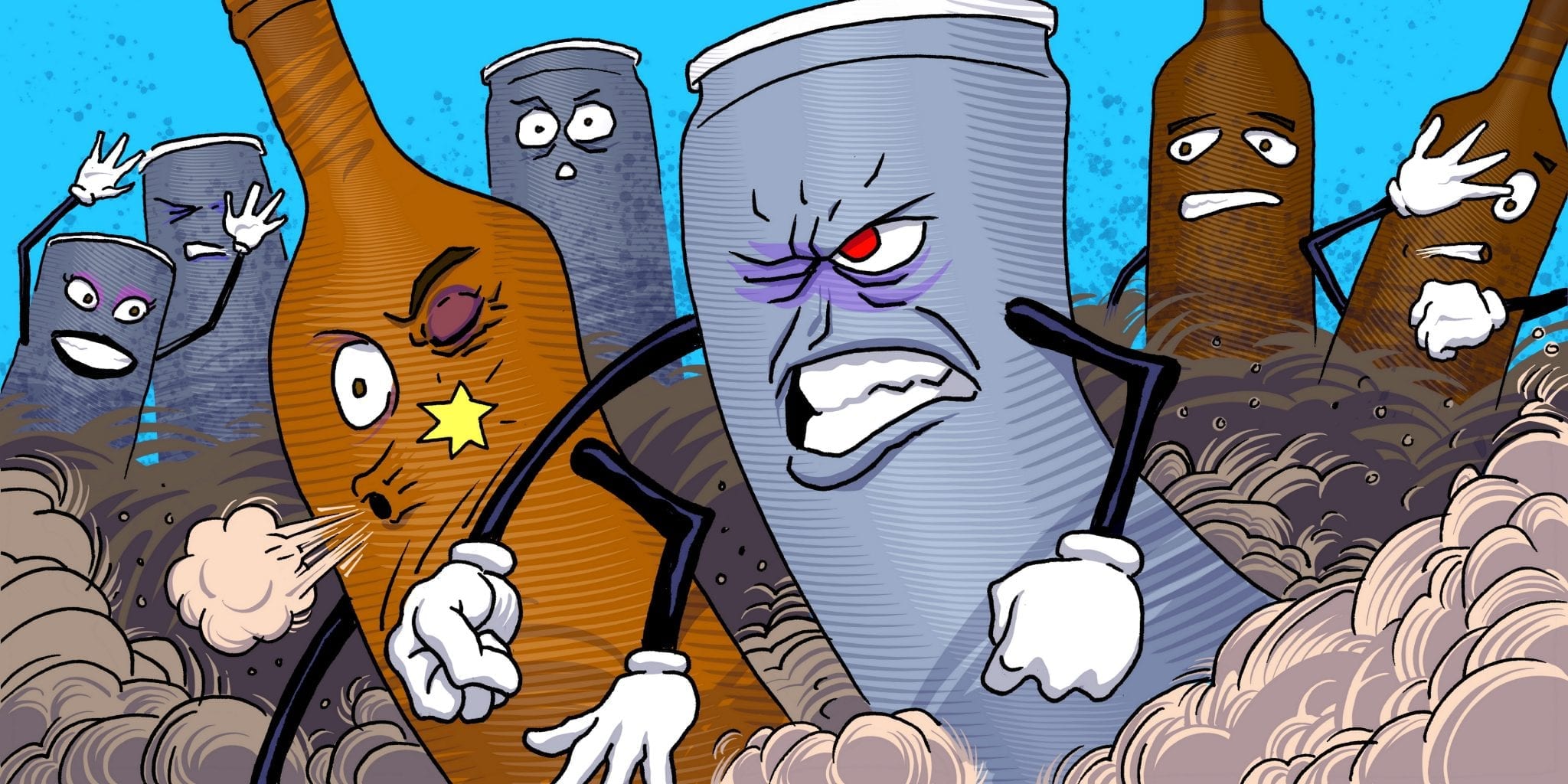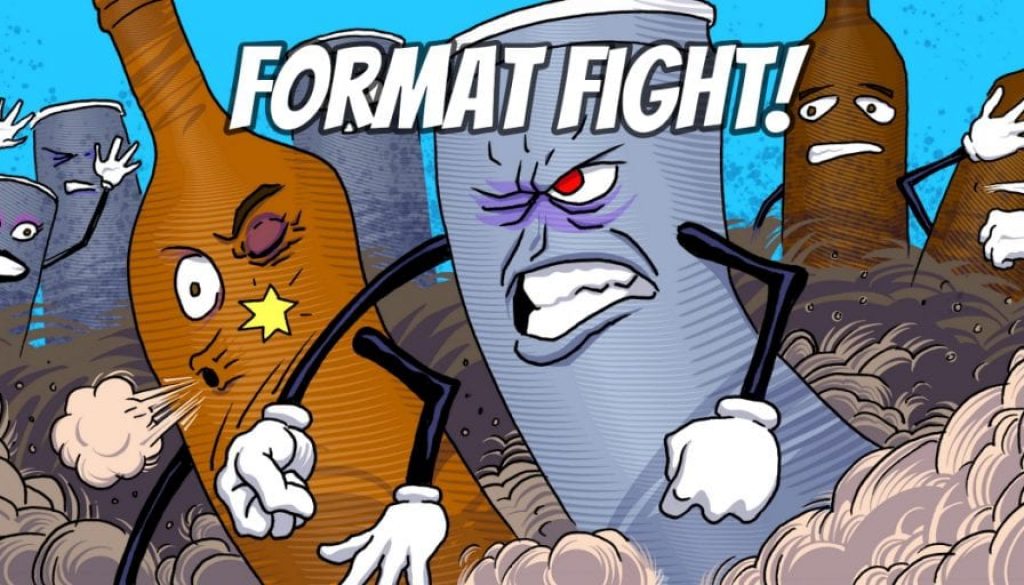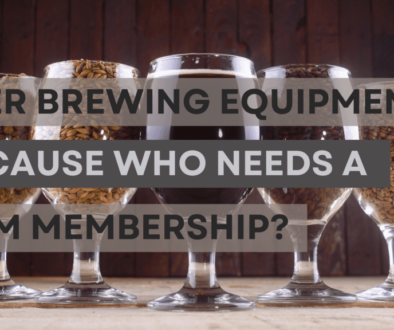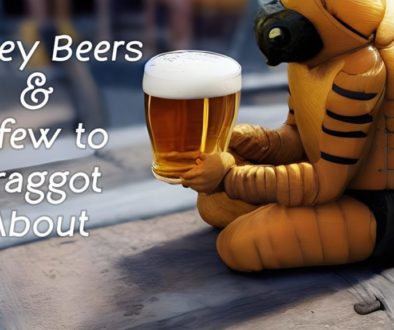This never happens, but say it did: You are shopping for your favorite beer or one you are on the lookout for. There it is, on the shelf, but, to your surprise, it’s available in both bottle and can format. Which would you choose? Why would you choose one over the other? What do you do? What helps you decide? Most importantly – are you making the right choice?
Honestly – there’s really no question of what the better choice is when it comes to choosing beer cans vs bottles – cans prevail! But not everyone agrees with that. So why are cans a better choice? Is it true that beer tastes better in a bottle? Let’s explore some of the Truths and Myths that exist in the ol’ beer cans vs bottles debate.
Contents
Beer Tastes Better in a Bottle
Myth!
Breweries put the same exact beer into bottles that they put into cans, yet many people think that the beer in the bottle tastes better. This is old school (or as I’d say – your dad’s way of thinking). In 2002 Dale’s Pale Ale broke the mold as the first craft brewery to put beer in a can. Until then, craft brewers were only using bottles and if you were drinking beer back then, you probably remember what a big deal this was at the time. People went crazy: How can it be? Good beer in a can?! These days most craft breweries have caught on, thank goodness. In fact, many newer breweries don’t even bother with bottles at all.
If people think that beer tastes better in a bottle it’s all in their heads.
In blind taste tests, beer that’s poured from a bottle or can into a glass is indistinguishable.
Fun Fact
Some breweries “yeast-dose” canned or bottled beers (can or bottle conditioning) so that they can improve the shelf-life and flavor of the beer. This could alter the flavor of a beer just enough so that a distinguished palate can taste the difference between bottled/canned beer. If you can tell a difference – kudos! You should be working in the beer business.

Beer Is Fresher In A Can
Truth.
When it comes to freshness, cans dominate bottles because of [lack of] light and oxygen. Just think about it – zero sunlight gets into a can. Light damages beer, giving it that skunky flavor (you’re familiar with that flavor if you drink those beers that come in green and clear glass) known by expert tasters as “lightstruck.”
If you want to get really geeky about it – certain hops are light sensitive and when they are exposed to light (through glass!) photo-oxidation takes place creating that skunky compound, known as 3-methyl-3-butene-1-thiol (MBT). You might even notice this flavor if you’re drinking beer out of a pint glass while sitting out on a sunny patio in the summer.
The moral of the story is: If you’re going to drink beer from a bottle, please-oh-please make sure the bottle is brown. Brown glass will protect the beer from the sun better than green or clear. If you’re outside and drinking out of a glass – try and keep it in the shade. But you know what’s even better? Cans!
When you drink out of a beer cans vs bottles, it’s bound to taste more like the brewer intended it to.
Now let’s talk oxygen. The seal of a bottle cap on a bottle is airtight, however, over time there can be a slow leak of oxygen into the bottle which affects the flavor of the beer. If the beer is consumed within the first few months following bottling this isn’t usually an issue, but with older beers it can be.
The exception is for certain beers that are meant to be cellared, or aged, in bottles for 6 months – 6 years. This a technique used for styles like big Belgian beers, sours, and barleywines. For bottle-aged cellared beers there’s not a specific timeline for when they’ll taste best – this is up to the brewer and sampler of the beer at various stages of cellaring.
On the flip side, beer cans vs bottles have a better seal. In fact, there’s a double seal on the lid of a can after it gets filled with beer, providing double the protection from oxygen getting in. This preserves the flavor and freshness of the beer.
Cans Are More Fun!
Truth.
What do you do while you are drinking beer? Perhaps you’re going for a ten-mile hike in the heat of summer or hopping on a raft for a river trip. Maybe you’re filling up your pockets with road sodas before getting on the ski lift or packing your backpack with a few cold ones to celebrate the end of a mountain bike ride. Maybe you’re heading to the beach to chill under an umbrella or play a game of volleyball.
For all of the fun activities, beer cans vs bottles are the obvious choice – not only because they are lighter in weight (think about your backpack!) but because they are crushable and unbreakable.
Cans are simply more portable.
To play the devil’s advocate…if your normal beer-drinking routine is sitting in a dark bar in the dead of cold-ass winter in middle America – bottles probably have a better chance of being your go-to. You can change your habits though – start ordering your beer out of a can!
Cans Are Better For The Environment
Truth.
Protect your Mother! Earth, that is. If you’re not thinking of your carbon footprint when debating whether to buy beer cans vs bottles, you’re missing out on one of the most important reasons that cans trump bottles. Bottles have been around longer so for breweries that are 10+ years old, they’re likely the preferred vessel. But are they the superior vessel?
Most of the big breweries – even craft breweries – end up shipping pallets and pallets of beer all over the country on semi-trucks and this has a huge impact on greenhouse gas emissions. The approximate weight of a 6pk of cans is 5lbs and 6pk of bottles is 7.5lbs. When you think about those numbers in terms of pallets, cans are a heck of a lot lighter. Not only are cans lighter, but the shape of a case of cans is also smaller than a case of bottles, which saves space on the trucks.
Shipping beer cans vs bottles cuts down on fuel use significantly.
If you need another reason to believe cans are better for the environment, the EPA reports that only 26.4% of recycled glass actually gets reused, while 54.9% of all aluminum cans get successfully repurposed after recycling. It’s kind of a no-brainer.
Recycling and Beer – A Second Opinion
I consulted a recycling professional I found on Beer Advocate about which format is better for Mother Earth:
Thirsty Bastards: When wrapped cans are recycled, is the plastic cut off? Or is it “burned off”? What about paper labels on cans?
Cavedave: I honestly don’t know if there is a procedure to remove the sleeve before it is added to the aluminum mix. I do know a certain amount of impurity is expected in the aluminum mix, and that it burns off when it is processed, such as the paper label. I have no idea about the sleeve though, good question.
TB: Obviously, both aluminum and glass are recyclable, but which process is more efficient?
CD: While glass is recyclable, there is almost no market for it since the raw materials for it are so abundant and inexpensive. We add our crushed bottle glass to clean fill and use it as any other clean fill for construction projects locally, so it never travels far.
Aluminum is nasty since no matter how much is recycled new aluminum is needed since much aluminum is used in buildings and is “permanent”, and mining and processing bauxite is environmentally disastrous as well as an energy pig (which glass is as well but to a much lesser degree).
It is good to consider these things and I hope you do the reading it takes to get good info to make proper decisions about how to make your lifestyle less toxic.
Are you convinced that cans are the way to go? Next time you’re standing in front of the cooler faced with the decision of choosing bottles or cans, what will you choose?
Illustration by Craig Gunderson






November 18, 2021 @ 4:26 pm
Beer taste better in a bottle then a can? Old school (or your Dads way.)?It was old school and generations of the best brewed bier. There might be a lot of kids (thirty something) today brewing good Bier, but there is wisdom on the gray of the beard. Bottled Bier is always better.